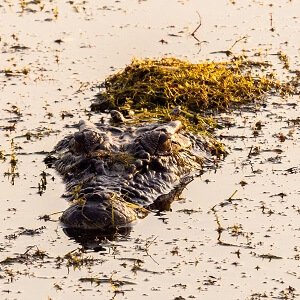Notorious for being sweltering hot, Kakadu’s weather is not for the faint of hearted.
Packed with thick bushland, thundering waterfalls, and an everchanging climate, the conditions in the region of Kakadu will all depend on what month you travel. Unlike most of the country, Kakadu does not have the four classic seasons of winter, summer, spring, and autumn, but six separate seasons. These six seasons were created by the traditional owners of the land, who have built this seasonal map from thousands of years of discovery and knowledge.
The Temperatures of Kakadu
-
Gudjewg
This is the very first season in Kakadu, usually from January until March time. Known as Gudkewg, and it’s renowned for being the season of monsoons. The region bursts with endless rainfall, with thunder, lightning, and flooding all common occurrences. The temperatures are typically between 24-34 degrees, with heavy humidity covering the area.
-
Bangkerreng
By April the rain clouds have dispersed, and clear blue skies are prevailing. It is the season known as Bangkerreng, or the season of harvesting. Temperatures usually range from 23 – 34 degrees, with the land ripe with greenery, plants packed with fruit, and the animals caring for their young. However, despite the immense reduction of rain, there are still some days that have violent, windy storms, which are known to the locals as ‘knock ‘em down storms.’
-
Yekke
The season of Yekke is from May to June, known for being cooler than most seasons, but still marked with a medium amount of humidity. The temperatures range from 21 – 33 degrees, so it is quite bearable for travellers when hiking through the region. With the wet season coming to the end, waterfalls such as Twin Falls and Jim Jim Falls are open to the public. Flooded with the rainfall’s water, the waterfalls are most impressive during this time.
-
Wurrkeng
With temperatures ranging from 17 – 32 degrees, Wurrkeng’s time from June to August is by far the coolest period in Kakadu. As the rainfall has ceased, the water slowly evaporates during this season, as most of the small creeks stop flowing and the floodplains drys out. For bird watchers looking to see the unique species of Kakadu, Wurrkeng is the time to visit, with the majority of the bird migration periods starting in this time.
-
Kurrung
A hot and dry season in Kakadu, starting from August to October, Kurrung is known for its swelteringly hot days and warm nights. All the water from the wetter months has dried up by now, with the majority of the waterfalls, creeks, and smaller rivers completely parched. As the heat can be overwhelming, it would be best for travellers that aren’t used to high heats, to skip this season. However, the temperatures usually range from 23– 37 degrees, so the coldest days can be quite pleasant if you are lucky!
-
Kunumeleng
From mid-October, Kunumeleng, otherwise known as the pre-monsoon season, arises. Temperatures remain at around 24 – 37 degrees, but the humidity slowly rises as the clouds begin to cover the region. This season can change in length depending on the year, lasting from only a few weeks or a few months.
Related article: The Must-See Sights in the Aussie Outback
Explore the Kakadu Tours
-
1 Day Kakadu Tour Deluxe from Darwin
Destination: Darwin
Duration: 1 Day
Tour type: Day Tour
Available Now
From $399
-
1 Day Kakadu Tour from Darwin
Destination: Darwin
Duration: 1 Day
Tour type: Day Tour
Available Now
From $245
-
Top End Land, Sky and Water Adventure
Destination: Darwin
Duration: 1 Day
Tour type: Day Tour
Available Now
From $695
-
3 Day Kakadu and Litchfield Tour
Destination: Darwin
Duration: 3 Days
Tour type: Short Break Tour
Available Now
From $800






